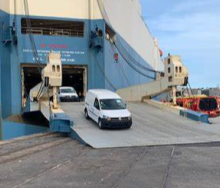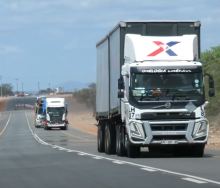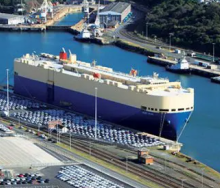A pilot offshore renewable green hydrogen production demonstrator was launched in Saint-Nazaire in France on Thursday.
The launch makes Lhyfe, the firm behind the development, the first in the world to set up a plant to produce renewable hydrogen at sea.
The ‘Sealhyfe’ platform, which seeks to pave the way for a new energy paradigm awaited worldwide, started its 18-month experimental period at quay and will then move off the coast of Le Croisic to the offshore testing site (SEM-REV) operated by French engineering school Centrale Nantes.
Around the world, the race for hydrogen is on and the development of offshore wind farms is booming. Lhyfe inaugurated the world’s first site for the production of hydrogen from onshore wind turbines in September 2021 and is currently preparing to deploy its solutions Europe-wide. The firm is convinced of the central role offshore has to play in the massification of renewable green hydrogen production.
Producing hydrogen using offshore wind turbines could allow all countries with a coastline to access renewable green hydrogen, produced locally and in industrial quantities, to decarbonise transportation and industry. However, until now, no one has ever produced hydrogen at sea.
Lhyfe will produce the first kilograms of renewable green hydrogen at quay and then at sea, operating automatically, in the most extreme conditions. The company set the bar high by installing its production unit on a floating platform connected to a floating wind turbine.
To achieve this technological feat, Lhyfe relied on the facilities of the offshore testing site, SEM-REV, operated by Centrale Nantes. The production unit was installed on the WAVEGEM wave energy platform developed by GEPS Techno.
At the end of the quayside test phase, the Sealhyfe platform will integrate the SEM-REV offshore testing area, off the coast of Le Croisic, about 20 kilometres from the coast. The device will be supplied with electricity by the pioneering floating wind turbine installed within the offshore test site in 2018. The electrolyser, optimised by Plug Power, is the first to be capable of operating on a floating platform.
Lhyfe Chairman and CEO Matthieu Guesné said the firm had launched the project to prove it was possible to produce green hydrogen offshore.
“At Lhyfe, we have only one aim: to leave a more breathable planet for our children. This is why we once again wanted to take up a major technological challenge, to prove – by producing hydrogen at sea for the first time – that it is possible to do it as of today. By paving the way for the mass production of renewable hydrogen at sea, Sealhyfe is fully in line with the EU’s strategy to deploy an offshore hydrogen chain, and wishes to help build the energy sovereignty of countries.”
During the first six-month trial phase at quay, the firm will obtain initial reference measurements and conduct a range of tests, including checking desalination and cooling systems, stack behaviour, remote control, energy management and resistance to environmental conditions.
At the end of this first stage, Sealhyfe will spend 12 months off the Atlantic coast. It will be installed less than a kilometre from the floating wind turbine, fixed to the ground by a system of anchors and connected to the site’s underwater hub using an umbilical designed and dedicated for this application (energy and data transfer).
At the end of the trial, Lhyfe will collate the substantial volume of data produced to design mature offshore production systems and to deploy proven technologies on a large scale.
Sealhyfe has the capacity to produce up to 400 kg of renewable green hydrogen a day, equivalent to 1MW of power. By 2030 the firm could expand capacity to 3GW of power.
French energy and environment agency, Agence de la Transition Ecologique and the Pays de la Loire region supported the firm to launch the pilot project. Lhyfe’s plans are in line with the EU’s objective to produce 10 million tonnes of renewable hydrogen a year by 2030.













